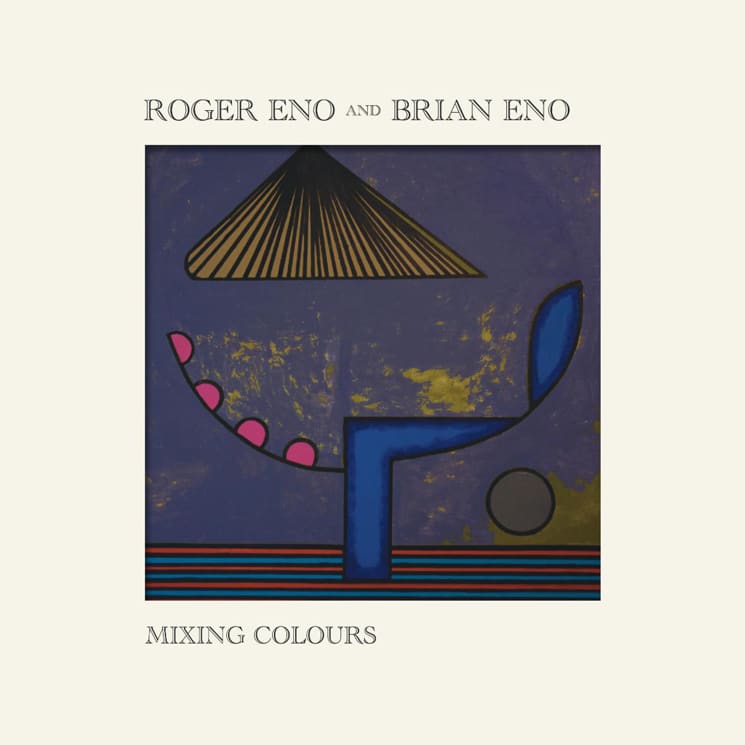For nearly four decades, Roger Eno has enjoyed a fruitful career, working on more than 30 LPs and soundtracks while collaborating with musicians like Laraaji and Peter Hammill. But no matter what Roger has achieved, he will always be known as Brian Eno's younger brother. It's not from a lack of trying to carve out his own career, which may explain why Mixing Colours stands as the sibling's first official collaboration.
Recorded over a 15-year span and written without the intention of being released, the 18-track/74-minute LP somehow manages to come off as very understated and quaint, considering it falls within the ambient genre. Mostly made up of pensive, single-finger keyboards, with the odd Brian Eno sound wash, much of Mixing Colours resembles like a movie score for a documentary that's running in real time.
Although tracks like the moving "Celeste," the woozy "Cinnabar" and the gauzy "Desert Sand" stand as the album's most emotive pieces, they seem to be structurally identical. Mixing Colours shows Roger and Brian Eno at their most casual and unguarded, but there's simply not enough variety, curiosity or sense of adventure here to dub it as a must-listen.
(Deutsche Grammophon)Recorded over a 15-year span and written without the intention of being released, the 18-track/74-minute LP somehow manages to come off as very understated and quaint, considering it falls within the ambient genre. Mostly made up of pensive, single-finger keyboards, with the odd Brian Eno sound wash, much of Mixing Colours resembles like a movie score for a documentary that's running in real time.
Although tracks like the moving "Celeste," the woozy "Cinnabar" and the gauzy "Desert Sand" stand as the album's most emotive pieces, they seem to be structurally identical. Mixing Colours shows Roger and Brian Eno at their most casual and unguarded, but there's simply not enough variety, curiosity or sense of adventure here to dub it as a must-listen.
